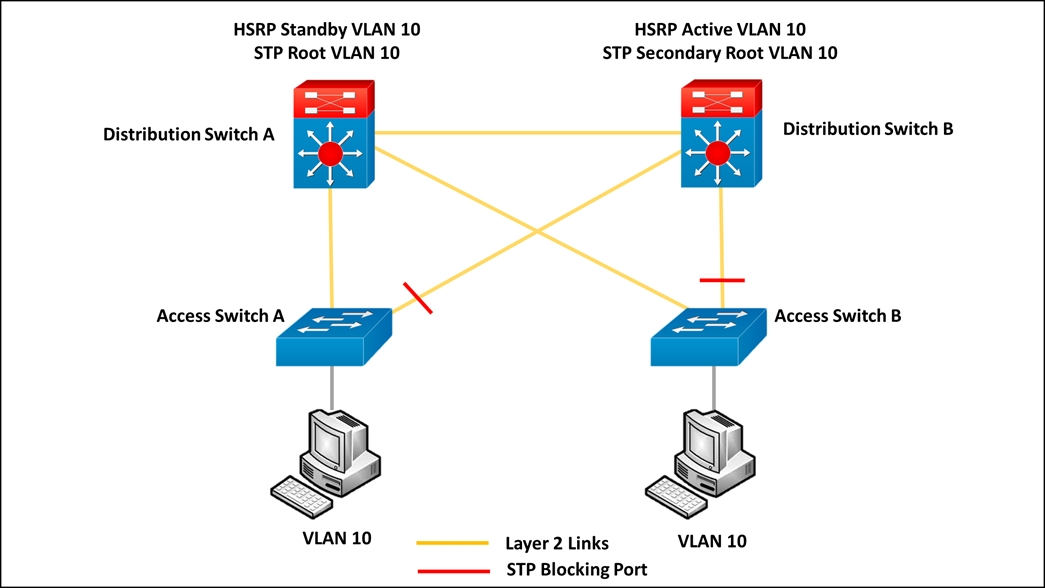
Refer to the exhibit. An engineer must optimize the traffic flow of the network. Which change provides a more efficient design between the access layer and the distribution layer?
B
Which first hop redundancy protocol ensures that load balancing occurs over multiple routers using a single virtual IP address and multiple virtual MAC addresses?
A
A company with multiple service providers wants to speed up BGP convergence time in the event a failure occurs with their primary link. Which approach achieves this goal and does not impact router CPU utilization?
C
An engineer is designing an enterprise campus network. The LAN infrastructure consists of switches from multiple vendors, and Spanning Tree must be used as a
Layer 2 loop prevention mechanism. All configured VLANs must be grouped in two STP instances. Which standards-based Spanning Tree technology supports this design solution?
A
A network engineer must segregate three interconnected campus networks using IS-IS routing. A two-layer hierarchy must be used to support large routing domains and to avoid more specific routes from each campus network being advertised to other campus network routers automatically. Which two actions does the engineer take to accomplish this segregation? (Choose two.)
BE
Which consideration must be taken into account when using the DHCP relay feature in a Cisco SD-Access Architecture?
A
Which function are fabric intermediate nodes responsible for in an SD-Access Architecture?
D
How do endpoints inside an SD-Access network reach resources outside the fabric?
D
When vEdge router redundancy is designed, which FHRP is supported?
D
What is the purpose of an edge node in an SD-Access network fabric?
A